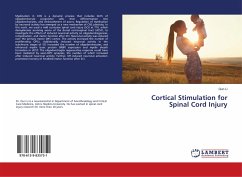Spinal anesthesia provides adequate anesthesia plus postoperative analgesia lead to reduction requirements of systemic opioids resulting in avoidance of sedation and respiratory depression. More importantly, the inhibition of the stress response to surgery, trauma induced nociceptive impulses, and blunting of the autonomic and somatic responses to pain facilitate breathing, coughing, sighing and early ambulation . This results in restoration of pulmonary function and reduction of post operative chest infection and pulmonary collapse. Finally, efferent sympathetic blockade results in increased blood flow to the region of neural blockade resulting in better wound healing and reduced risk of deep venous thrombosis and thromboembolism Opioid receptors are dicovered in the dorsal horn and the brainstem. Binding of opioid receptors causes hyperpolarization of nerve membranes, which decreases nerve impulse transmission.
Bitte wählen Sie Ihr Anliegen aus.
Rechnungen
Retourenschein anfordern
Bestellstatus
Storno


